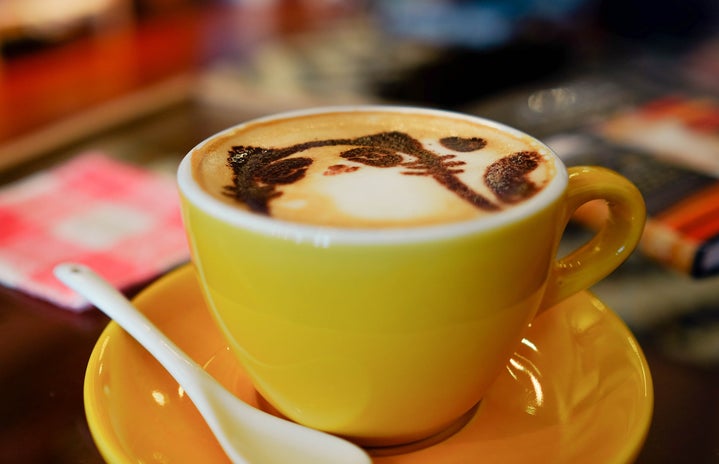Coffee is a staple drink in the US. It’s rare to meet someone who doesn’t drink it today. However, it is undeniable that coffee is an acquired taste. I don’t know about you, but I’ve never seen someone try coffee for the first time and like it right away. I sure didn’t. So why did I become a coffee snob? The aesthetic, simple as that. I love the aesthetic that surrounds coffee, the culture of it, and the complexity in its simplicity. How did I become a coffee snob? I made the effort to acquire the taste of coffee, and I learned to appreciate its flavor and nuances. I still struggle with its bitterness, though. But that’s because my journey into coffee is far from over.
To start, the origin of coffee is unknown. There are legends around it, but no one knows exactly how it came to be. The most famous is the Ethiopian legend of the shepherd Kaldi. One day, he noticed his goats energetically prancing around a nearby shrub and realized they had eaten the red berries from the mysterious shrub. Kaldi shared his discovery with the monks of a nearby monastery, and they began using the plant to stay awake late into the night while studying. These monks then spread the energetic benefits of this plant to other monasteries, and soon, it was spread around the world.
It’s weird to think that one of the most popular drinks in the world was discovered by a shepherd who saw his goats acting weird.
As I said in the legend, coffee shrubs have bright red berries, but the drink actually comes from the seeds. The coffee bean we know today is a result of the processing of the seed inside the bright red berries. They are dried and then roasted, giving them their characteristic brown color.
You’ve probably heard of light, medium, and dark roasted coffee, and their difference is as straightforward as you think—it’s all in how long they are roasted after being dried. Light roasts are the least roasted, which is why they’re a lighter and more dull brown. They also have a bright, acidic flavor to them. Dark roasts, on the other hand, have been roasted the longest, bringing out the natural oils and making them dark and shiny. Dark roasts are bitter and richer in flavor. Medium roasts fall smack in the middle; they are darker but still dull, and the brightness and bitterness are more balanced—which is why I personally like them more.
Now, back to the story. Up until recently, I did not like coffee. I would always steal a sip of my mom’s Americanos, but I never enjoyed it enough to have my own cup—or even more than that one sip. But I was determined to become a coffee drinker. I didn’t need to be the next Lorelai Gilmore, but I wanted to sit at a little coffee shop and sip on my little coffee while reading or writing. However, when trying new things, there’s always the risk of not liking it, and I did not want to buy a $7 coffee and not like it. The solution? Combine it with something I do like.
I love hot chocolate (here’s a review of the hot chocolates around campus), and what’s hot chocolate plus coffee? Mochas. They’re the best way of getting into coffee if you love chocolate. They’re sweet and creamy, which nearly masks the bitterness of the coffee, but you can still taste it.
When I got a job as a barista, I became more open to trying other types of coffee. I graduated from mochas to lattes—espresso with milk. I began experimenting with different syrup flavors in my latte: vanilla (a classic), hazelnut, caramel, peppermint, raspberry, and all sorts of combinations, like toasted marshmallow with white chocolate and toffee nut with lavender. Then, I ventured into cappuccinos and cafe au laits (drip coffee with steamed milk).
A year and a half later, my coffees are half as sweet as they used to be, and I even have my own home bar made up of a hand-held milk frother, a little Moka pot, a French press, a Chemex, and mason jars with different coffee roasts. I’m hoping to invest in an espresso machine sometime soon.
I’ve gone from only ever buying my mom’s coffee to learning the nuances of coffee and having multiple brewing tools at home. Coffee has become one of my favorite drinks, and its versatility as a hot and refreshing drink allows me to enjoy it year-round.
References:
https://www.ncausa.org/about-coffee/history-of-coffee
https://www.ncausa.org/About-Coffee/10-Steps-from-Seed-to-Cup



